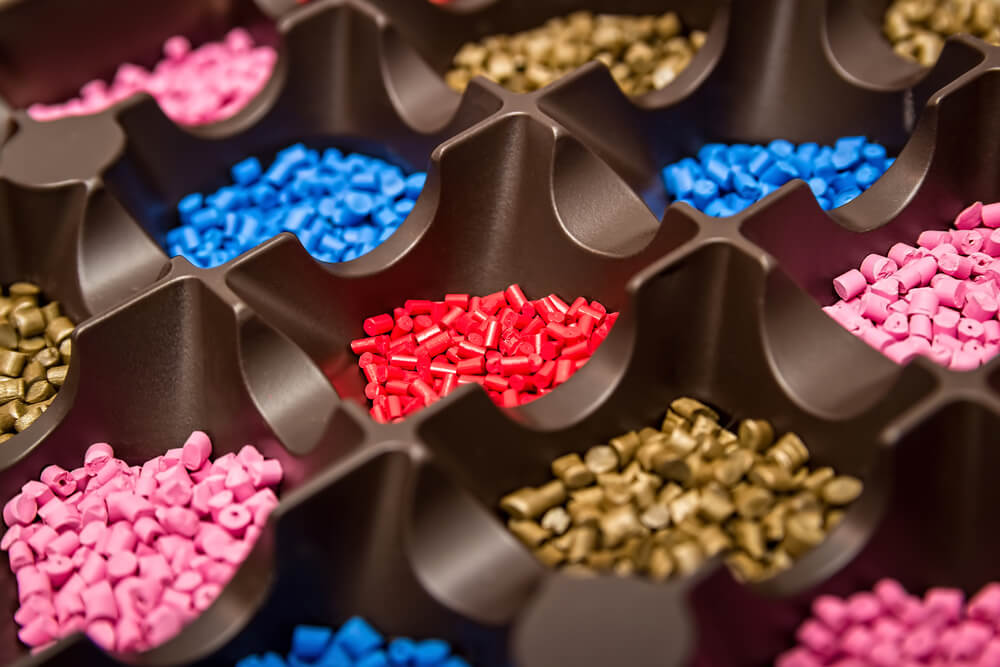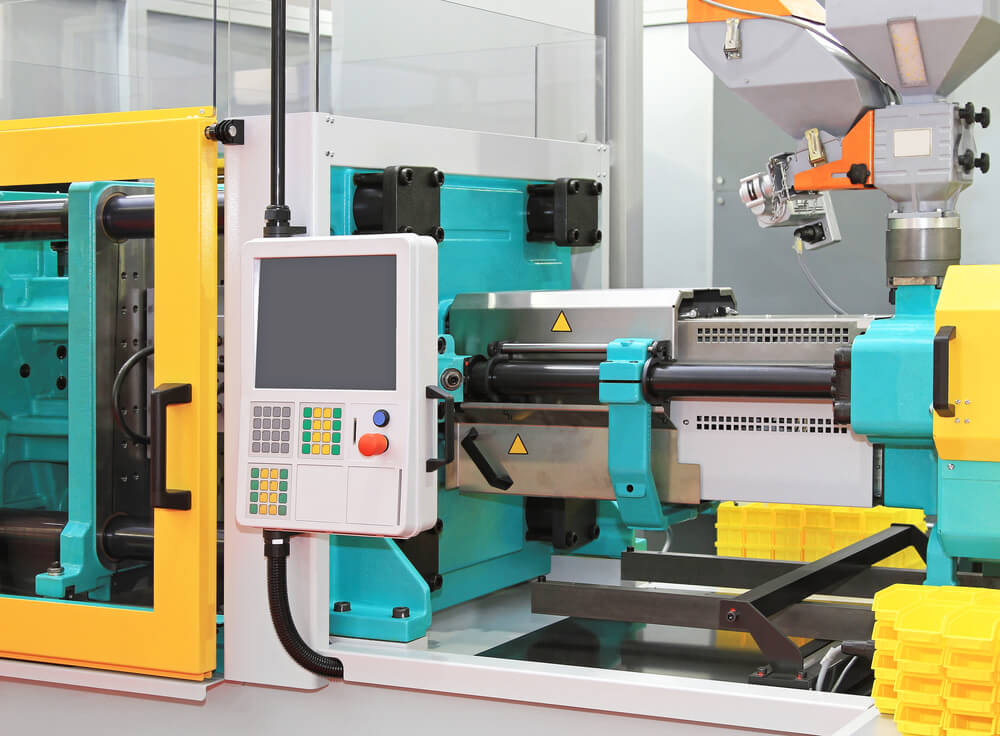One manufacturing method that enables quick mass manufacture of components is injection molding. Due to the delicate nature of this method and its extensive use, several errors can occur throughout the injection molding process and result in product flaws. The following article will cover sink mark defects in injection molding and shed a light on how to avoid them.
One manufacturing method that enables quick mass manufacture of components is injection molding. Due to the delicate nature of this method and its extensive use, several errors can occur throughout the injection molding process and result in product flaws. The following article will cover sink mark defects in injection molding and shed a light on how to avoid them.
What Are Sink Marks in Injection Molding?
A sink mark is typically a type of depression on the part surface brought on by the material underneath shrinking. From visual observation, this defect is minute depressions or recesses that appear on a molded part's otherwise level and uniform surface. Sink marks in injection molding defects are typically present in the thicker areas of molded objects.
Thicker parts have a higher density of plastics, and some plastics shrink more than others as they freeze off. Therefore, they will naturally take longer to cool down, while the outside area, which contacts directly with the mold steel, cools much more quickly than the interior. When the molecules in thicker parts shrink, they start to compress, causing this type of flaw.

What Causes Sink Marks on Molded Materials?
Although sink marks have no impact on the molded part's physical durability, longevity, or functionality, they are still seen as production quality flaws that manufacturers want to avoid as much as possible.
Understanding how and why these marks form is the first step in preventing them from happening in any injection molding production process. In the following sections, we will dive into the top 4 reasons that cause sink mark defects on molded materials.
Inappropriate Molding Conditions
Firstly, with a thick wall, a plastic part may practice cooling less effectively because, in thick plastic products, the cooling process between the inside and outside layers will differ. The outside part, which contacts directly with the steel mold, will experience a drop in temperature faster than the inside.
Therefore, inappropriate molding conditions with the cooling temperature being set up at the same between thick and thin material layers will easily lead to the appearance of this type of defect.
On the other hand, the insert's low temperature can also be the reason causing the local shrinkage of surrounding melt, which leaves a depression and shrinkage mark. Therefore, it is necessary to raise the insert's temperature to avoid this happening.
Next, the loss of injection pressure in some points will also result in depression and shrinkage markings. Because low pressure cannot create enough force against the shrinkage of the material, especially when the injection molding machine's nozzle hole is too small or the nozzle is locally obstructed.
Additionally, inappropriate setup of cooling temperature is one of the common causes of shrinkage in plastic molding production lines. Because not every plastic material and every point in plastic mold acquires the same cooling temperature, the mold needs to be adequately cooled. Some areas or parts need to be cooled down slower by altering to a higher cooling-water temperature.
Mold Defects
Poor melt material flow inside the molding system can be a reason for sink marks occurring far away from the gate. In this case, the mold structure prevents pressure from being transferred. Mold defects can create a bottleneck in the material flow, adding to the sink mark causes.
Raw Materials not Catering to Molding Requirements
The surface of the plastic injection molding part will show depressions and shrinkage marks if the following situation happens:
- The shrinkage rate of the molding material is too high
- The flow performance is too bad
- The lubricant in the raw material is insufficient
- The raw material is damp
In order to attain the greatest extent possible, low shrinkage resin grade should be chosen for plastic parts with high surface quality requirements.
Unreasonable Structural Design of the Molded Part
The thick-walled pieces, especially when the wall thickness varies in a wide range, are vulnerable to dents and sink defects because there is not adequate pressure applied during molding. Therefore, when developing the shape and structure of injection molded parts, the wall thickness should remain constant as much as possible.

Best Practices to Reduce Impacts of Sink Marks
Sink marks are primarily the result of uneven thermal contraction (or shrinking) in thick materials: The core material begins to cool after the outside layer has cooled and solidified, while it should happen in reverse. Therefore, to mitigate the impacts and even prevent the sinking marks from forming, there are some best practices to apply:
1. Lower Mold Temperatures
One of the first things to check throughout processing is the melt temperature. The melt temperature ought to fall within the recommended range specified by the resin manufacturer. Sink marks will result from the pieces taking longer to cool if the melt temperature is set too high.
This defect can also result from excessive mold temperature due to another reason. The time it takes for the gate to seal can prolong if this value is adjusted too high. Once the resin producers provide the suggested mold temperature, production lines must ensure the mold follows instructions.
To ensure the mold temperature can be controlled under the adequate range, manufacturers can use a well-designed industrial water/air chiller from Flying Tiger. The temperature can be monitored and adjusted accurately according to the requirement.
2. Raise Holding Pressure and Prolong Holding Time
If the diagnosis indicates that the material temperature is not the reason, holding pressure is the next thing to be examined. To prevent shrinkage inside the mold, the production line can alter the holding pressure to compensate for the pressure loss.
More plastic will be required for the mold's thicker areas to maintain their shape. Insufficient plastic in thicker parts as the molecules cool can create sink mark defects.
The amount of plastic in the sink area might increase when the pack pressure and hold pressure rise. The molecules will not be pulled in on themselves if there is enough pressure and enough plastic in the area. Therefore, sink marks causes can be prevented.
Extending the holding period will also help if the depression and shrinkage marks are close to the gate. When the plastic part has a depression at the wall thickness, the cooling time of the plastic part in the mold should be extended.
3. Reduce Wall Thickness
Another sink mark solution is to reduce the wall thickness. The reason leading to this defect is the ineffective cooling process. By reducing the thickness of the well, manufacturers can ensure a more effective cooling process. However, no matter how much you decrease the wall thickness, the thickness of the wall should be as uniform as feasible.
4. Leverage Wing Gates
For special situations, when the wall thickness of parts is highly varied and this parameter cannot be modified, it can be solved by leveraging wing gates. In this way, the plastic component can be fitted with a wing-shaped body before the gate is placed on the small wing. After the plastic part is created, the winglets are cut off. The gates on the winglets might be inverted gates and point gates, transferring the concave faults of the plastic part to the winglets.
Mitigate the Impacts of Sink Marks with Flying Tiger's Solutions
Sink marks are a typical occurrence on plastic injection molded parts. However, the good news is that with effective auxiliary equipment solutions, we can mitigate the impact of this imperfection. At Flying Tiger, we have helped numerous product manufacturers with expertized solutions and advice to solve sink marks and other injection molding concerns. Contact us now to discuss your next winning project!
Back






